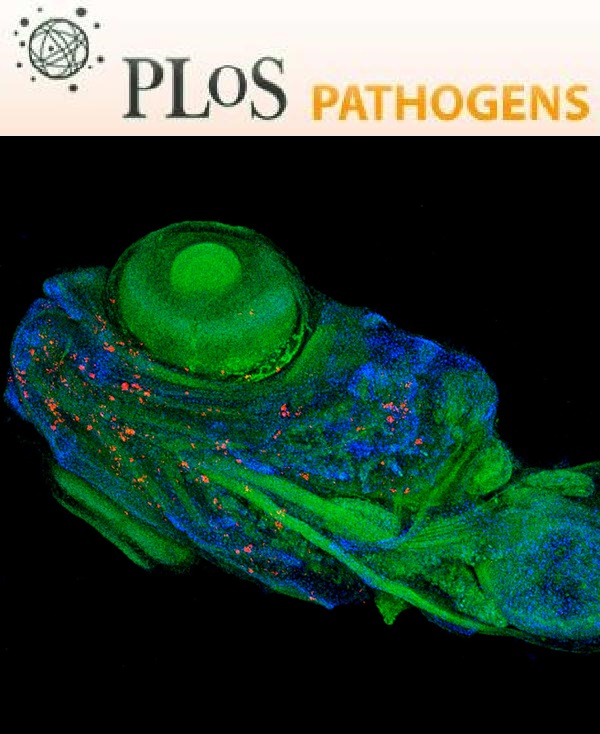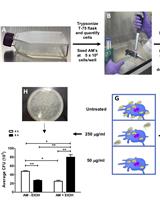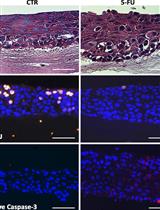- EN - English
- CN - 中文
Plasmodium falciparum Rosette Disruption Assay
恶性疟原虫莲座破坏试验
发布: 2013年04月20日第3卷第8期 DOI: 10.21769/BioProtoc.411 浏览次数: 10945
Abstract
Rosetting, i.e. the capacity of Plasmodium falciparum-infected red blood cells (iRBCs) to bind two or more uninfected red blood cells (RBCs) is associated with severe malaria in African children. Disruption of rosettes using small soluble inhibitors or specific antibodies is viewed as an interesting strategy to treat or prevent severe malaria manifestations. The protocol presented here describes an assay to monitor rosette dissociation, validated for the Palo Alto VarO, IT4/R29 and 3D7/PF13 rosetting clones (Vigan-Womas et al., 2011).
Materials and Reagents
- Rosette-forming iRBCs
- Culture of rosette-forming parasites at mature stages (trophozoite to early schizont stages, 5-10% parasitaemia, 5% haematocrit)
- Parasite clonal lines 3D7/PF13, Palo Alto 89F5 VarO, IT4/R29 or patient isolates
- Culture of rosette-forming parasites at mature stages (trophozoite to early schizont stages, 5-10% parasitaemia, 5% haematocrit)
- Culture medium reagents
- Malaria non-immune human AB+ serum (pool of 3-5 different donors)
- RPMI 1640 medium with L-glutamine and 25 mM HEPES (500 ml) (Life Technologies, Gibco®, catalog number: 52400 )
- 10 mM Hypoxanthine solution (100x) (C.C.Pro, catalog number: Z-41-M )
- Gentamicin solution (50 mg/ml) (Sigma-Aldrich, catalog number: G1397 )
- Malaria non-immune human AB+ serum (pool of 3-5 different donors)
- Other materials
- Non pyrogenic sterile polystyrene, Rectangular Canted Neck Cell Culture Flask with Plug Seal Cap (75 cm2, Corning Incorporated, catalog number: 430720 ; 25 cm2, Corning Incorporated, catalog number: 430168 , for 20 and 5 ml culture medium, respectively)
- Ice cold Ficoll (LymphoprepTM, density 1.077 g/ml) (Abcys, catalog number: 1114545 )
- Dextran sulfate sodium salt from Leuconostoc spp, MW > 500,000 (Sigma-Aldrich, catalog number: D6001 )
- Heparin sodium salt from porcine intestinal mucosa (Sigma-Aldrich, catalog number: H3393 )
- Fucoidan from Fucus vesiculosus (Sigma-Aldrich, catalog number: F5631 )
- Hoechst 33342, 10 mg/ml solution in water (Life Technologies, Molecular Probes®, catalog number: H-3570 )
- Sterile distilled water RNase DNase free (Life Technologies, Gibco®, catalog number: 10977-035 )
- Mouse, rat or rabbit immune and pre-immune polyclonal sera
- Monoclonal antibodies (mAbs) reacting with the surface of rosette-forming iRBCs
- Serum or plasma samples from individuals living in a malaria endemic region
- Serum or plasma samples from malaria non-immune individuals
Note: All plasma samples must be collected using an anticoagulant other than heparin (heparin disrupts rosettes of multiple strains at the concentration used for anticoagulant activity. Convenient anticoagulants are EDTA [ethylene diamine tetraacetic acid] or sodium citrate). Store at -20 °C or -80 °C until use.
Note: Abs are home made or collected from patients.
- Non pyrogenic sterile polystyrene, Rectangular Canted Neck Cell Culture Flask with Plug Seal Cap (75 cm2, Corning Incorporated, catalog number: 430720 ; 25 cm2, Corning Incorporated, catalog number: 430168 , for 20 and 5 ml culture medium, respectively)
Equipment
- 5 ml polystyrene round-bottom sterile tube (BD Biosciences, Falcon®, catalog number: 352058 )
- Sterile laboratory vacuum filter 0.22 µm (Stericup® Filter Units Millipore, catalog number: 051446 )
- Sterile polypropylene conical centrifuge tubes (15 ml, BD Biosciences, Falcon®, catalog number: 352097 ; 50 ml, BD Biosciences, Falcon®, catalog number: 352098 )
- Sterile disposable serological 1 ml aspiration pipette (Dominique Dutscher, catalog number: 999079 )
- Professional gloves (e.g. Kimtech Sterling Nitrile gloves, Kimberley-Clark Professional, catalog number: 99211 , or Satin Plus gloves Kimberley-Clark Professional, catalog number: SP2330E or 2220E )
- 1.4 ml matrix round bottom non sterile tubes (Thermo Fisher Scientific, catalog number: 10630784 )
- Microscope glass slides (Thermo Fisher Scientific, catalog number: 10090431 ) and cover slips 22 x 22 mm (Thermo Fisher Scientific, catalog number: 11728691 )
- Centrifuge with a swing bucket rotor (Thermo Fisher Scientific Heraeus Multifuge 3SR+ centrifuge )
- Centrifuge Eppendorf 5702 with an A-4-38 swing bucket rotor (Thermo Fisher Scientific, catalog number: 05-400-318)
- Vacuum pump (ILMVAC Biovac, model: 104 )
- Fluorescence microscope with UV-light and 40x or 100x magnification (Leica fluorescence microscope DM5000B, HP Plan ocular 10 x 22 507897, HCX Plan 100x Oil, HCXPL 40x PH2)
- Incubator at 37 °C in continuous gazing: 5% O2, 5% CO2 and 90% N2 (Thermo Fisher Scientific Binder incubator, model: CB210 )
- Laminar flow class II, type A2 biological safety cabinet (e.g. Thermo Fisher Scientific HeraSafe, catalog number: 13-998-002 )
Procedure
文章信息
版权信息
© 2013 The Authors; exclusive licensee Bio-protocol LLC.
如何引用
Guillotte-Blisnick, M., Mercereau-Puijalon, O. and Vigan-Womas, I. (2013). Plasmodium falciparum Rosette Disruption Assay. Bio-protocol 3(8): e411. DOI: 10.21769/BioProtoc.411.
分类
微生物学 > 微生物-宿主相互作用 > 体外实验模型 > 细胞系
细胞生物学 > 细胞染色 > 核酸
您对这篇实验方法有问题吗?
在此处发布您的问题,我们将邀请本文作者来回答。同时,我们会将您的问题发布到Bio-protocol Exchange,以便寻求社区成员的帮助。
Share
Bluesky
X
Copy link













